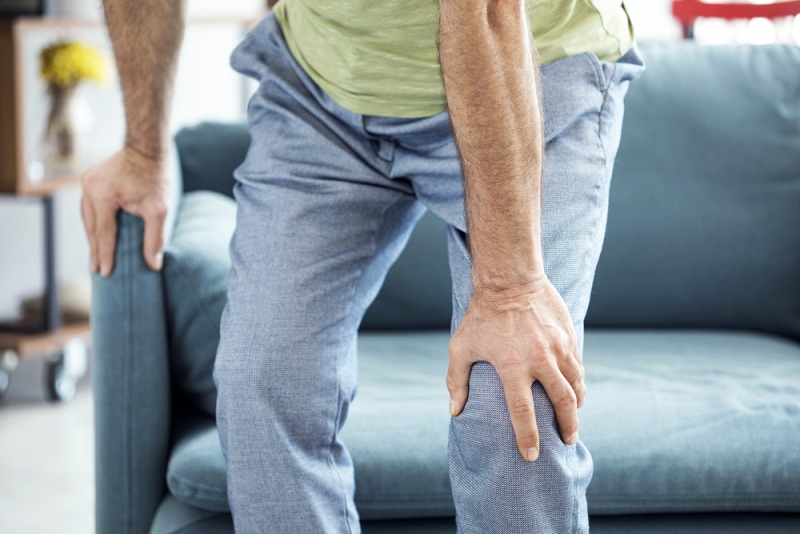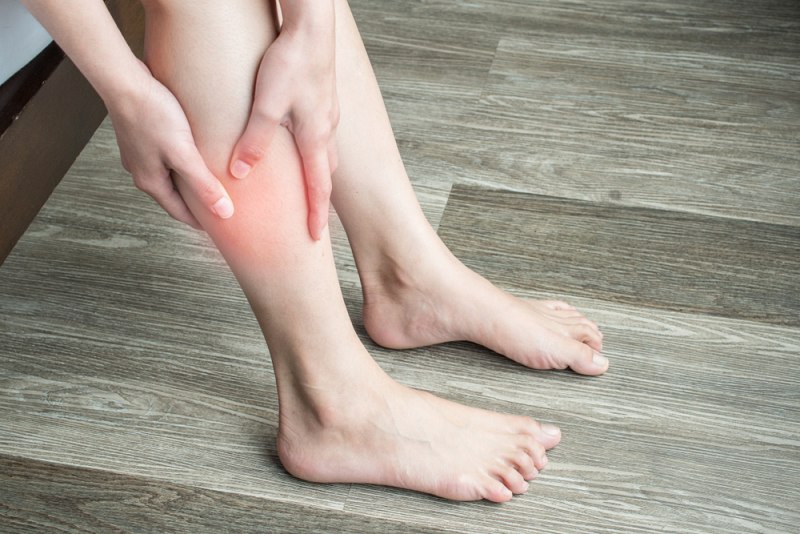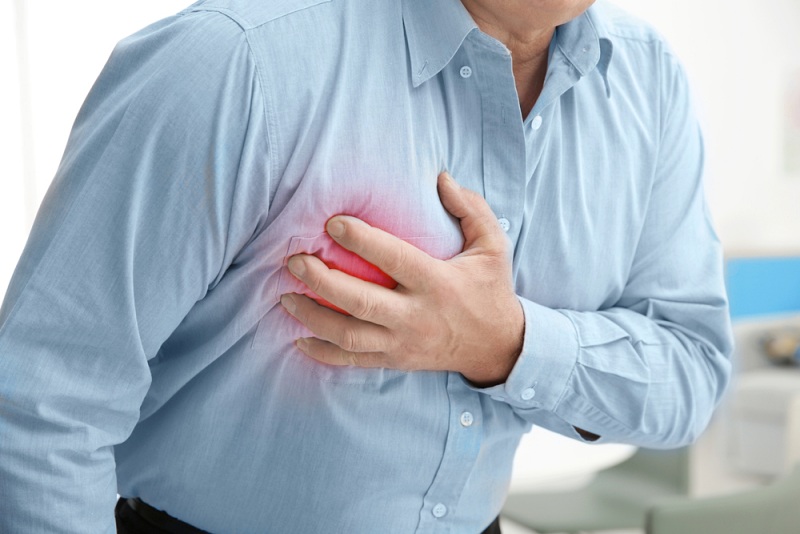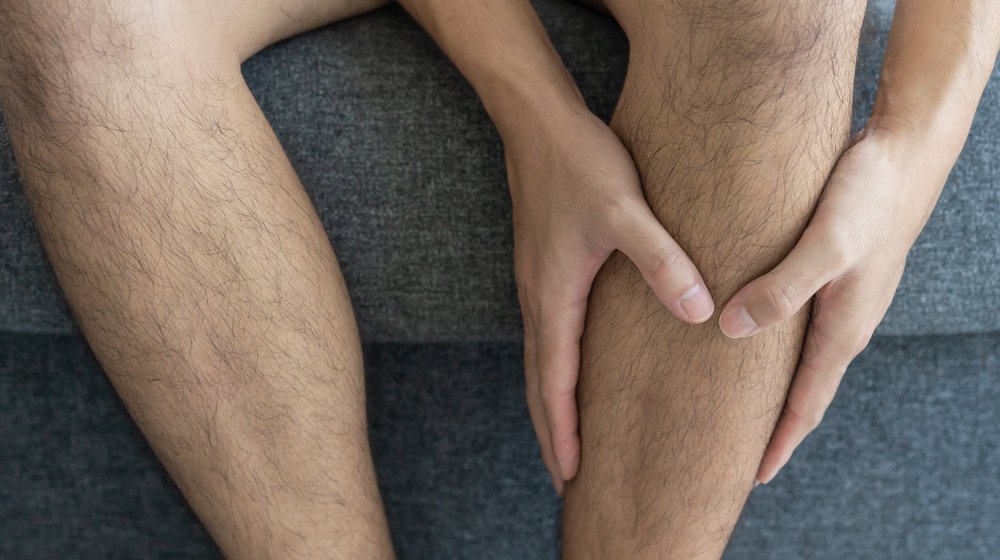Congestive Heart Failure Leg Cramps | Leg Pain Heart Attack
Have you ever heard of congestive heart failure leg cramps? Something as simple as leg pain could tell you about the state of your heart.
Continue reading to find out why your leg pain could be serious.
RELATED: How Long Can You Live With Heart Disease | Congestive Heart Failure Life Expectancy
Congestive Heart Failure Leg Cramps | What Are Your Legs Telling You?

Can Heart Failure Affect Your Legs?

Yes, it might.
The circulatory system is vital in keeping you alive and healthy.
- heart
- blood
- blood vessels
The heart pumps the heart and is strong enough to reach the top of your head to your feet.
Your blood is in charge of delivering nutrients and oxygen to your organs, as well as taking away waste and carbon dioxide.
Blood vessels run throughout your entire body, serving as a transport highway for your blood.
Because your vessels run sprawl through your entire body, heart problems could also manifest in areas like your feet. Your feet and skin could also tell you how well you manage your diabetes too.
What Is Peripheral Artery Disease?

Peripheral artery disease (PAD) is when blood vessels in your lower extremities (periphery) narrow or have a blockage.
Like coronary artery disease, PAD is usually caused by atherosclerosis.
This prevents blood from reaching your peripheral regions, potentially cutting off your blood and oxygen supply.
Atherosclerosis is the build-up of plaque which is made of fat and cholesterol.
It may happen in your peripheral limbs like your arms, hips, thighs, and legs. However, it most commonly affects the legs.
Symptoms of peripheral artery disease may include:
- leg pain that persists even during rest
- wounds that don't heal or heal slowly around your legs, feet, or toes
- dead tissue (gangrene)
- your foot or lower leg feeling colder than the other side or the rest of your body
- poor nail or hair growth on your toes or legs
- for diabetic men, erectile dysfunction
What makes PAD very dangerous is that you can easily mistake this for the common leg cramp.
PAD symptoms may occur during exercise or strenuous activities, similar to occasions when you get leg cramps or experience leg pain.
And for older adults, you may also easily mistake this for arthritis.
Being aware of the other accompanying symptoms of PAD could help you assess the situation more clearly and act accordingly.
Don't hesitate to call your doctor for symptoms that are unusual to you.
Whether it's leg cramps, arthritis, or PAD, if it disrupts your daily activities, it's worth discussing with your doctor.
When left untreated, PAD could lead to complications like heart failure, heart attack, or leg amputation.
What Are the Risk Factors for Peripheral Artery Disease?

There are risk factors like age that are beyond your control.
- 65 years old and up
- 50-65 years old at risk for atherosclerosis
- younger than 50 years old with type 2 diabetes and a minimum of one risk factor for atherosclerosis
You are also more likely to develop PAD if you have a family history of PAD, heart disease, or stroke.
Fortunately, there are risk factors within your control like:
- smoking (increases your risk three-fold compared to non-smokers)
- type 2 diabetes (increases your risk of heart disease)
- high blood pressure (hypertension)
- high cholesterol (may lead to the development of atherosclerosis)
- lack of physical activity
Just 150-300 minutes of moderate-intensity exercise could give you major health benefits. And it could help lower risk factors for heart disease.
How Can You Tell if Leg Pain Is Caused by Heart Problems?

Check the skin around your legs and lower extremities.
- Are they discolored?
- Does the color change depending on whether I lower or elevate them?
- Is it colder?
- Do you have new sores?
- And if you do have a sore or wound, does it take longer to heal?
If you have difficulty walking long distances due to leg pain or cramps, it may also be a sign to walk straight to your doctor.
Pay attention to these kinds of details, and you may be able to tell if your leg pain could be a sign of claudication or peripheral artery disease.
Common reasons for leg pain may include:
- varicose veins
- muscle cramps
- sprains
- Achilles tendinitis
- ACL injury
- joint inflammation
- infection
- rheumatoid arthritis
- sciatica
- tendinitis
And this list isn't even exhaustive.
Again, what makes PAD dangerous is that it's very hard to catch. Over 50% of PAD patients are asymptomatic.
It's also linked to many possible causes, making it hard to connect to a potential heart attack.
As a general rule of thumb, if your symptoms get worse or if you notice new symptoms, call your doctor immediately.
If there's no obvious trigger for your pain (like walking or exercise), book an appointment with your doctor.
If in doubt, call your doctor anyway. Claudication or leg pain could point to other health conditions.
The best way to find out if your leg pain is connected to a potential heart attack is by getting tested by a trained physician.
RELATED: Which Essential Fatty Acid Is Responsible for Lowering the Risk of Coronary Heart Disease?
What Does a Blocked Artery in Your Leg Feel Like?

Claudication is the type of pain you feel when you walk. It can affect your buttocks, thighs, or calves.
Claudication happens because your PAD limits the blood flow through your blood vessels. As a result, your active muscles don't get the blood they need.
It may go away once you rest, but your disease progresses, claudication pain may also worsen.
You may be experiencing claudication pain if you notice symptoms like:
- pain, a burning sensation, or muscle weakness when you walk
- hairless, shiny, and blotchy skin on your feet
- the leg becomes red when you put it down but pale when you elevate it
- cold feet (lower temperature compared to other side or the rest of your body)
- leg pain
Also, note that PAD and claudication may occur in places other than your legs. It could also occur around your arms and groin.
In some cases, impotence in men may be a symptom of claudication.
The cause of claudication is atherosclerosis. So by keeping your heart and circulatory system healthy, you may prevent claudication and other PAD symptoms.
Claudication may also be related to other life-threatening health conditions, including heart attack, heart failure, or stroke.
What Are the Other Signs of Heart Failure and Heart Attack?

In addition to claudication or leg pain, there are other signs you need to watch out for.
If you experience these symptoms along with your leg pain, call your doctor immediately.
Common warning signs of heart failure may include:
- shortness of breath
- persistent coughing or wheezing
- swelling or edema (build-up of fluid)
- fatigue
- confusion
- lack of appetite
- nausea
- heart palpitations, faster heart rate
Warning signs of a heart attack may include:
- chest pain or discomfort
- shortness of breath
- lightheadedness
- vomiting
- nausea
- neck, jaw, or back pain
- pain or discomfort along your shoulder or arms
Leg cramps are no joking matter. They can disrupt your daily life and keep you from getting your 30 minutes of daily exercise.
And it turns out, it may also be a sign of heart disease.
Leg pain and claudication may point to peripheral artery disease, which could increase your risk of heart disease and heart attack.
Check out this video to learn more about heart disease, congestive heart failure, and leg cramps:
Because it's very hard to catch, the best way to stop it in its tracks is through vigilance.
Keep your doctor on speed dial, and don't hesitate to ask about symptoms you may be experiencing.
Managing and treating your claudication or peripheral artery disease early could help prevent heart attack and heart failure.
Did you not know that your feet could tell you so much about your health condition? Share your thoughts in the comments section below!
Up Next:
- 17 Foods to Lower High Blood Pressure Without Medication
- What Medications Can Raise Blood Sugar Levels?
- Why Good Nutrition and Physical Fitness Is Vital to Good Health?
Join the healthy living conversation with us on Facebook, Instagram, and Pinterest. We want to hear your story—let’s connect via these channels. Find our community online and join the healthy living revolution today!
Trending
Get Updates
SIGN UP FOR OUR NEWSLETTER TODAY

Tongue Color | 7 Scary Tongue Color Meanings

Lecithin Benefits and Side Effects: 10 Surprising Truths

Related

Tongue Color | 7 Scary Tongue Color Meanings

